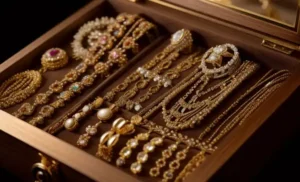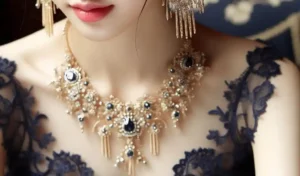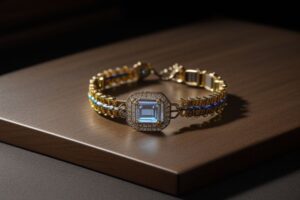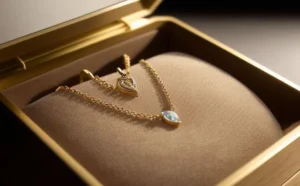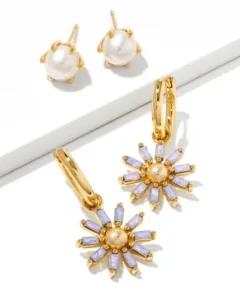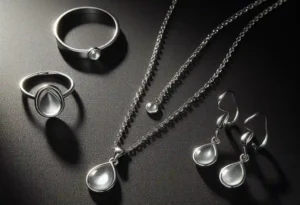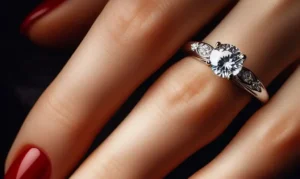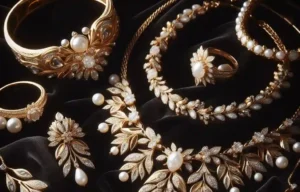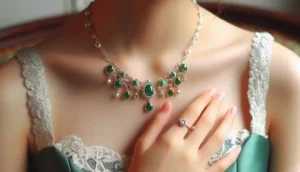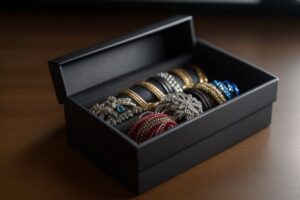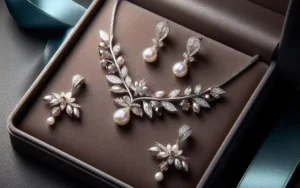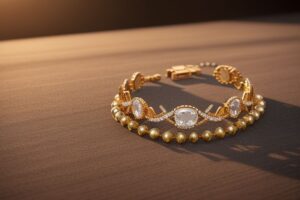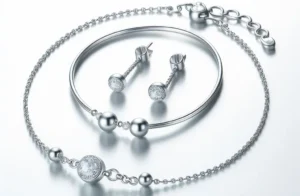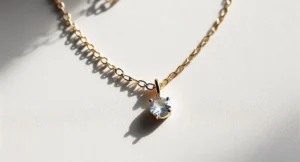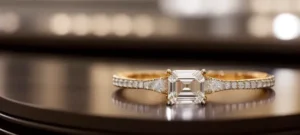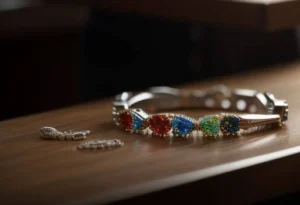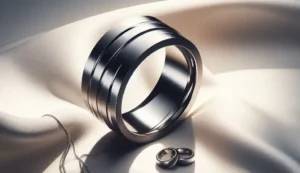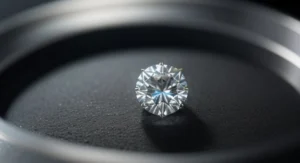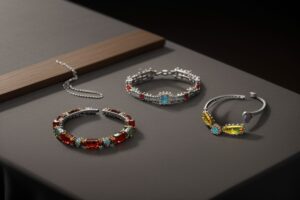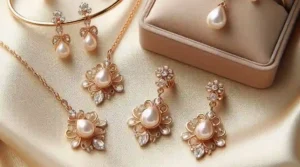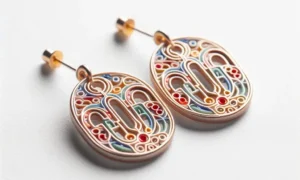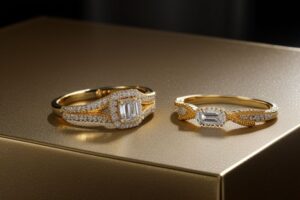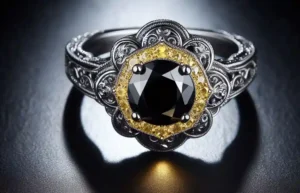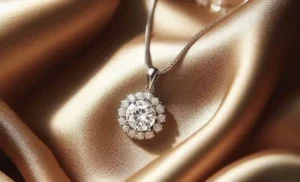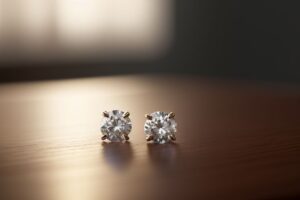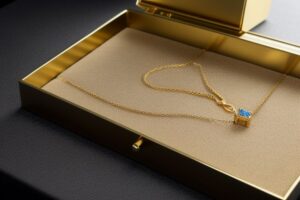Why is White Gold More Expensive? When it comes to selecting fine jewelry, white gold stands out for its elegance, durability, and unique appeal.
However, a common question arises among buyers and enthusiasts alike: Why does white gold cost more than its counterparts?
This blog post aims to demystify the factors contributing to the higher price point of white gold, offering insights into its composition, production process, and market dynamics.
Why is White Gold More Expensive?

– Specialized Alloy Composition: White gold’s unique blend requires premium metals like palladium, which are more costly than the alloys used in yellow or rose gold. This sophisticated composition contributes to the higher cost.
– Rhodium Plating: A key feature of white gold is its rhodium plating, which provides a bright, durable finish. Rhodium, being scarce and valuable, adds a significant expense to white gold jewelry both in initial application and periodic maintenance.
– Craftsmanship and Production: The process to create white gold involves intricate steps that demand skilled labor and advanced technology, from alloying to the final adjustments for hue and durability, which elevates its production costs.
– Market Demand: High demand for white gold, driven by its modern appeal and popularity for significant occasions like weddings, increases its market value. This popularity can lead to a premium pricing model.
– Maintenance Costs: The necessity for periodic rhodium re-plating introduces additional long-term costs for owners, unlike yellow or rose gold, which do not require such maintenance to maintain their color and luster.
Understanding the Basics of White Gold
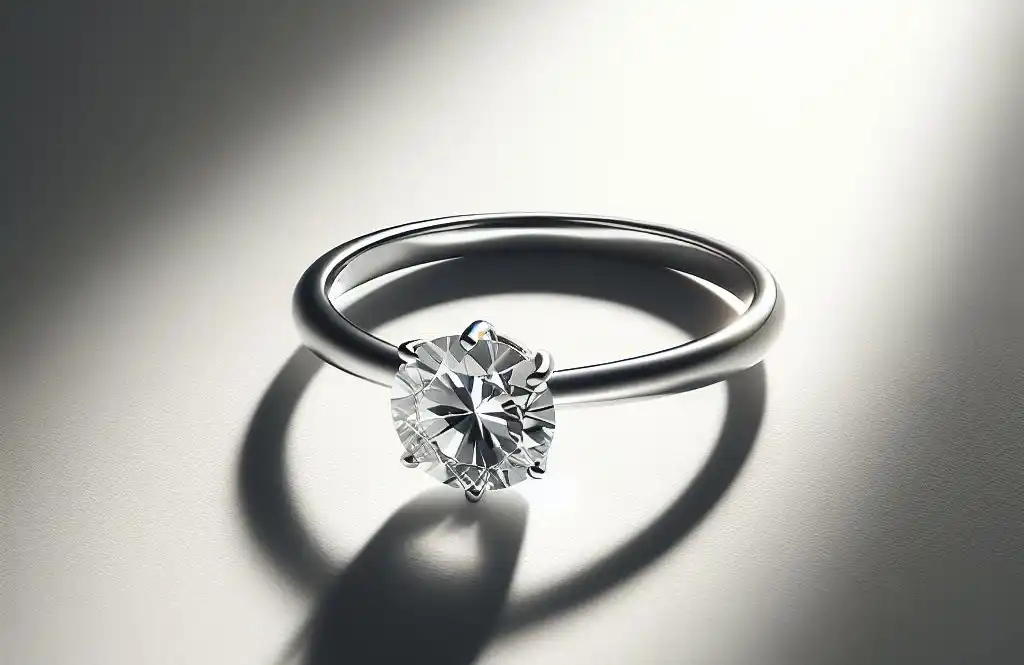
White gold represents a fascinating blend of tradition and innovation in the jewelry world. It is an alloy, which means that it is made by combining pure gold with other white metals to achieve its signature sheen and enhanced durability.
Key among these alloying metals are palladium, silver, and nickel—each chosen for its ability to complement gold’s natural beauty while imparting strength and a desirable pale hue to the final product. The proportion of these metals varies, but the objective remains the same: to create a material that maintains the prestige of gold while offering a fresh, contemporary look.
The karat system, a measure of purity used for gold, applies to white gold as well. This system indicates the amount of pure gold present in the alloy. For example, 18K white gold contains 75% pure gold and 25% alloy metals, while 14K white gold comprises 58.3% gold.
This balance ensures that white gold retains the intrinsic value of traditional gold while gaining the characteristics—such as improved resilience and a modern aesthetic—that have made it so popular in today’s jewelry market.
This specialized composition not only differentiates white gold from its yellow and rose counterparts but also marks it as a preferred medium for those seeking a blend of classic elegance and contemporary flair in their jewelry choices.
The Complex Process of Crafting White Gold
The journey to create white gold begins with the precise blending of pure gold with white metals such as palladium, silver, or nickel. This meticulous process is fundamental to achieving the desired color and properties, setting the foundation for the alloy’s unique characteristics.
The expertise required for this initial step underscores the complexity and skill involved in producing white gold. Following the alloying, the material undergoes a series of mechanical manipulations, including rolling, which compresses the metal into sheets or other shapes, and annealing, a heat treatment that softens the metal for further shaping.
These steps are critical for refining the alloy’s structure, optimizing its workability and achieving the ideal balance between durability and aesthetics. In some instances, the alloy may be further adjusted through additional alloying to perfect its hue and performance attributes.
This intricate sequence of operations, from alloying to final adjustments, highlights the advanced knowledge, technology, and labor intensity required to craft white gold. Each phase of the process not only adds to the cost but also to the distinctiveness and quality of the final product, distinguishing white gold as a material of choice for those seeking a harmonious blend of strength, beauty, and enduring value in their jewelry.
The Role of Rhodium Plating in Pricing
Rhodium plating significantly influences the cost of white gold jewelry. Rhodium, a member of the platinum group metals, is renowned for its exceptional brightness and hardness, making it a key element in enhancing the aesthetic appeal and durability of white gold pieces. This metal is applied as a coating to give white gold its highly sought-after brilliant white finish, and to provide a protective barrier that increases resistance to scratching and tarnishing.
Due to rhodium’s scarcity and high value, the plating process adds a notable expense to the overall manufacturing costs of white gold items. Additionally, the technical skill required for effective plating, along with the necessity for periodic reapplication to maintain the jewelry’s shine and color integrity, further contributes to the cost.
The maintenance aspect, involving re-plating every few years depending on wear and tear, introduces an ongoing investment for owners of white gold jewelry.
This requirement for rhodium plating not only impacts the initial purchase price but also influences the long-term upkeep costs associated with white gold jewelry.
The combination of rhodium’s intrinsic value, its role in enhancing the material’s properties, and the labor involved in the application process, collectively play a pivotal role in shaping the pricing dynamics of white gold in the fine jewelry market.
The Impact of Alloy Composition on Cost
The unique blend of metals used to create white gold significantly influences its price point. Unlike traditional yellow gold, which often incorporates more commonly available and less costly metals like copper or zinc, white gold relies on a mix of higher-priced metals such as palladium.
The inclusion of these premium metals not only imbues white gold with its characteristic color and enhanced properties but also elevates its overall market value. Palladium, in particular, has seen a rise in price due to its demand in various industries, including jewelry making, which directly impacts the cost of producing white gold alloys.
The market fluctuations of these alloy metals can further affect white gold’s pricing, as increases in the cost of raw materials are typically passed on to consumers. Additionally, the exact composition of the alloy can vary, offering different balances between durability and color, which can also play a role in the final cost of white gold jewelry.
This intricate balance between desired physical attributes and the economics of metal supply highlights how alloy composition is a key factor in determining the price of white gold items, reflecting the intricate interplay between material science and market dynamics in the jewelry industry.
Market Demand and its Effects on Price
The allure of white gold in modern jewelry cannot be overstated, especially when it comes to significant milestones like engagements and weddings. This trend has solidified white gold’s place in the market, driving its demand to unprecedented levels.
The contemporary preference for the sleek and stylish appearance of white gold over more traditional metals has led to an increased willingness among consumers to pay a premium for items made from it. As demand rises, the laws of economics dictate that prices tend to follow suit, contributing to the higher costs associated with white gold jewelry.
The impact of fashion trends and consumer preferences on the price of white gold is further magnified by the influence of celebrities and the media. High-profile endorsements and visibility in popular culture have reinforced the desirability of white gold, making it a symbol of sophistication and modern elegance.
This cultural capital adds to its value, both in terms of monetary worth and status, thus affecting its market price.
In addition, the versatility of white gold in jewelry design—being a favored choice for both contemporary and classic styles—ensures its ongoing popularity. This sustained interest feeds into the cycle of demand and price, maintaining white gold’s position as a sought-after option in the jewelry market.
The dynamics of consumer demand, influenced by cultural trends and personal preferences, play a pivotal role in shaping the pricing landscape of white gold, reflecting its esteemed status among precious metals.
Comparing Costs with Yellow and Rose Gold
When evaluating the differences in pricing between white, yellow, and rose gold, it’s important to consider the unique attributes and manufacturing processes each undergo. Yellow gold, cherished for its classic appearance, is often alloyed with metals like copper and zinc which are more readily available and less costly.
This results in a lower price point compared to white gold. Rose gold, on the other hand, gains its distinctive pinkish hue from a higher copper content, which, like yellow gold, utilizes more affordable alloying metals. Therefore, rose gold shares a similar cost structure to that of yellow gold, making both options generally less expensive than white gold.
The disparity in pricing can also be attributed to the specific metals used in the creation of white gold. The inclusion of high-priced metals such as palladium in white gold alloys contributes to its higher cost. Furthermore, the additional steps in white gold production, including rhodium plating to achieve its signature brilliant white finish, add to its overall expense.
These processes, combined with the fluctuating market prices of palladium and rhodium, and the intricate craftsmanship required, delineate the pricing gap between white gold and its yellow and rose counterparts. As market dynamics and consumer preferences continue to evolve, these factors collectively influence the cost differences among the three types of gold.
Making an Informed Decision
When faced with the choice between white, yellow, or rose gold for your next piece of jewelry, it’s essential to weigh various factors that align with your individual tastes and lifestyle needs. White gold, with its sleek and contemporary charm, stands as a premium selection for those who value modern aesthetics combined with the timeless allure of gold.
The investment in white gold is not just monetary; it encompasses an appreciation for the intricate crafting process, the sophisticated blend of metals, and the enduring beauty it offers.
It’s important for potential buyers to consider the unique qualities and costs associated with white gold. For instance, its durability and the requirement for periodic rhodium re-plating are practical considerations that can influence long-term satisfaction with your jewelry.
Additionally, understanding that the karat value of white gold impacts both its appearance and price allows for a more nuanced decision-making process. Higher karat white gold will be purer and thus more costly, yet many find that 14K or 18K white gold strikes the perfect balance between durability, value, and the sought-after white hue.
As you navigate your options, reflect on what aspects of jewelry are most significant to you. Is it the color, the maintenance, the cost, or perhaps the metal’s durability? By considering these elements, you’re better equipped to select a piece that not only meets your aesthetic preferences but also serves as a wise investment in your personal collection.
Frequently Asked Questions
Q: Can the rhodium plating on white gold wear off?
A: Yes, over time and with regular wear, the rhodium plating on white gold can begin to wear off, revealing the slightly yellower color of the white gold alloy beneath. It’s recommended to have white gold jewelry re-plated every few years to maintain its bright white finish.
Q: Is white gold hypoallergenic?
A: While white gold itself can be considered hypoallergenic, it’s important to note that nickel, a common alloy metal used in some white gold, can cause allergic reactions for some people. For those with sensitivities, selecting white gold alloyed without nickel or opting for a higher karat could be beneficial.
Q: How do I care for my white gold jewelry?
A: To care for white gold, clean it with a mild soap and water solution, drying with a soft cloth. Avoid exposing it to harsh chemicals or abrasive surfaces. Regular maintenance, including rhodium re-plating, will keep it looking its best.
Q: Is white gold stronger than yellow gold?
A: Yes, due to the alloys mixed with pure gold, white gold is generally stronger and more durable than yellow gold, making it an excellent choice for daily wear jewelry such as engagement rings and wedding bands.



